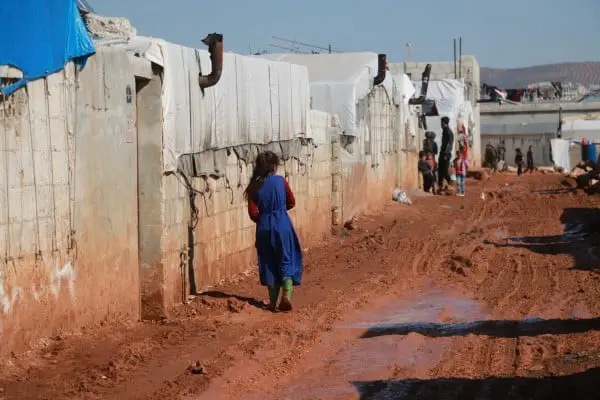Foreign aid is when richer countries give material, finances, resources or advice to developing countries. The objective of overseas aid is to help people in poorer countries escape poverty, as well as assist those affected by humanitarian crises. It also aims to help developing countries become stronger, better governed and improve their defences.
To better understand foreign aid, let’s look at the main examples. We’ll also look at recent instances of how countries have used foreign aid and examples of the good it can do.
Humanitarian Aid
A first example of foreign aid is humanitarian assistance. When vulnerable communities are hit by disasters or conflicts, they require humanitarian aid. When local and national governments cannot manage the response, they call for international assistance. Foreign aid is given by donor countries to help people hit by crises all over the world.
Foreign aid given as humanitarian assistance comes in many forms. It includes food, and non-food items such as clothes. It also includes provisions for shelter, clean water and sanitation, livelihoods recovery, education, protection, and rebuilding. Humanitarian assistance is one of the most commonly cited examples of foreign aid.
Many countries that experience humanitarian crises have now developed stronger mechanisms to assist their people. However, when large disaster strike, or conflicts break out, and people need assistance that their own government cannot provide, international aid is delivered. Providing humanitarian assistance is one of the main objectives of foreign aid.
Recent examples of overseas aid being used for humanitarian assistance include the 2015 Nepal earthquake response and the 2013 Typhoon Haiyan response in the Philippines. These major national disasters required international aid as they overcame the capacities of national actors.
Another example of foreign aid supporting humanitarian relief is the large amount of funds given to help people displaced by the Syrian Civil War. Overseas aid projects assist people living in Turkey. Lebanon and Iraq who were forced to flee from the conflict. International aid also helps people displaced internally within Syria.
Development Aid
A second example of foreign aid is development assistance. This is finances or resources given by donor countries to assist poorer nations to develop. It also covers projects funded using foreign aid to international NGOs and the UN to improve living conditions in developing countries.
A key objective of foreign aid is to lift people out of poverty and create better lives for people in poorer countries. Foreign aid given as development assistance differs from humanitarian aid as it aims to address long-term a structural challenges in poorer countries, as opposed to tackling a sudden onset crises.
Overseas aid given as development assistance aims to improve the economic, political and cultural level of a country. It can also focus on peace building, community development or assisting marginalised communities.
An example of foreign aid as development assistance is the large amount given by donor countries to improve girl’s education in the developing world. Improving access to schooling for young women has been a major priority for foreign aid donors for several years and significant progress has been made in recent decades in getting more girls into education in poorer countries.
Another example of development assistance as overseas aid are the infrastructure projects funded in many poorer countries. Foreign aid is often channeled through the UN or developing country governments to improve roads, rail, tele-communications and utilities. These improvements provide an economic boost to developing countries.
Government Loans
Another example of foreign aid is government loans. This is when donor governments or international institutions lend money to developing countries in order to fund development projects or improve their economies.
Governments of poorer countries often lack the means to raise a funds. This limits the services they can provide to their citizens and can be a key reason many live in poverty. Developing countries are also more at risk of economic shocks that can de-stabilise government finances and reduce its ability to operate fully. Foreign aid given as governments loans is one example of how donor countries can assist poorer nations.
As well as loans given to developing country governments by other countries, there are also international institutions that coordinate lending money to governments in financial crises. Two examples of these are the World Bank and the International Monetary Fund (IMF). Both use money provided by donor countries to support governments facing economic crises or to fund specific development projects.
An example of overseas aid being delivered as an inter-governmental loans is the series of economic aid packages given by the European Union to Greece following the Greek debt-crises. These loans were required to allow the Greek government to continue providing services and to prevent it from defaulting on its debts. Their eventual aim was to raise Greece out of its economic crises.
The IMF has ongoing loans and repayments from many countries, especially as a result of the Covid-19 pandemic. Examples include Bangladesh, Ukraine, Mongolia, Egypt, Bolivia and the Democratic Republic of Congo. These are just some instances of foreign aid being provided as government loan.
Financial Grants
Financial grants given to governments or organizations in a developing country is an example of foreign aid.
Grants, unlike loans, are the transfer of funds that do not need to be paid back. Foreign aid donors provide grants directly to the governments of developing countries, as well as to NGOs and UN agencies. They may also provide financial grants to specific institutions within a country – such as for education, healthcare or the military.
Financial grants can also be given by foreign aid donors in times of emergency when developing country governments urgently need financial assistance.
An example of financial grants being used as foreign aid is the monetary assistance the US government provided to Afghanistan. The paying of government and military salaries was a financial grant as Afghanistan was not required to pay this back.
Another example of grants being given as foreign aid is the funding given to development NGOs and UN agencies. Most governments that donate significant amounts of foreign aid have specialised government departments that manage their funding grants. Examples of these include:
- US Aid
- UK FCDO
- Global Affairs Canada
- Swedish International Development Cooperation Agency
- OFDA (US)
- German Federal Foreign Office
- European Union
Government agencies such as these give financial grants to NGOs and UN agencies to run specific projects. These can include humanitarian responses to crises, or projects tackling education, sanitation, poverty reduction or livelihoods in developing countries. As the funds channeled through these agencies come from donor government foreign aid budgets, they are a prime example of how financial grants are used as overseas aid.
Military Equipment
Another example of foreign aid is the donation of military equipment. Many countries provide arms and equipment to poorer nations they see as strategically important. They do this to improve the capabilities of their armed forces so that they may better defend their country, achieve internal security and deter aggression from external powers.
All types of military equipment are donated as foreign aid. It can include small arms, tanks, planes and even warships. Some military equipment is given after it has expired its use from the armed forces of the donor countries, some is given brand new.
The military equipment given as part of a foreign aid package, and the circumstances in which it is donated, depends on the many different factors. These include the context in which the recipient nations will use it, its alliances with the donor nation and its current military capabilities.
As well as donating military equipment as foreign aid, donor countries can also sell arms to other countries at discount prices or provide them with loans with which to purchase military equipment.
A recent example of military equipment being given as foreign aid is the arms donated by Western countries to Ukraine. This aid aims to increase the capabilities of Ukraine’s army and deter further Russian aggression in the east of the country.
An often-sighted example of military equipment as foreign aid is the arms sales to Israel from the US.
Military Training
As well as military equipment and financial grants and loans to support developing countries armed forces, military training is also an example of foreign aid.
Donor countries provide specialised training to the armed forces of countries they see as strategically important. This training can be on general tactics to improve the overall functioning of their armies, air forces and navies, or on specific areas required – such as counter-terrorism or anti-insurgent tactics.
Richer countries have highly advanced armed forces. This includes years of experience training for different combat scenarios. As part of the foreign aid donor countries give, they often provide military expertise to allied countries.
Military training as foreign aid can either be setting up and running large scale training programmes in poorer countries working closely with their armed forces. It can also be sponsoring individuals in their armed forced to study at leading military academies in the donor country.
An current example of military training as foreign aid is the training mission being conducted by American armed forces in Iraq. Here they train Iraqi security forces on country-insurgency and on specialist tactics to fight ISIS.
A further example of military training given as overseas aid is the training provided by the US to Central and South American countries to tackle drug cartels.
Technical Guidance
An example of foreign aid is technical guidance. This is where donor countries fund specialists to provide expertise that developing countries need.
Technical guidance as foreign aid comes in many forms. It includes foreign aid donors funding research visits by leading experts in a field, it can also be the establishment of training centres in developing countries that aim to build the capacity of local actors.
There are a number of areas that foreign aid donors often fund technical experts to assist developing countries in. These include military tactics and training, academic research, humanitarian and development work, environmental concerns, governance and business management.
The aim of technical guidance as foreign aid is to give developing countries access to information and expertise they may lack. Foreign aid donors often fund conferences that bring experts from many countries together, as well as bringing key personnel from developing countries to view how institutions in donor country’s function.
The World Humanitarian Summit in 2016 was an example of foreign aid donors supporting technical expertise gathering and exchanging ideas, with the aim of assisting developing countries. Donors funding consultants to work in UN agencies is another example of technical expertise as foreign aid.
Educational Exchanges
A final example of foreign aid is educational exchanges. This is where students and academics from developing countries attend educational institutions in developed countries. It also covers foreign aid donors funding visits from schools and colleges in their countries to those in recipients’ countries.
The aim of educational exchanges funded by overseas aid is to create links between students, academics, colleges and schools in both the developed and the developing world.
Those attending educational exchanges from developing countries get to research with and learn from some of the leading academics in the world. They also get experience at some top institutions when they are funded to attend colleges in developed countries. When academics and students from the West are funded to attend programmes in developing countries, they get first-hand experience of issues poorer countries face.
Educational exchanges are an important example of foreign aid. The objective is to create long-term improvements in developing countries by improving education and conducting specific research that can be used to inform policy decisions. Foreign aid donors see education exchanges as benefiting both developing and developed countries as they allow for academics and students to learn from each other, as well as build important links between institutions.




